The mother sauces of Mexico: Junior Merino explains 7 main salsa varieties
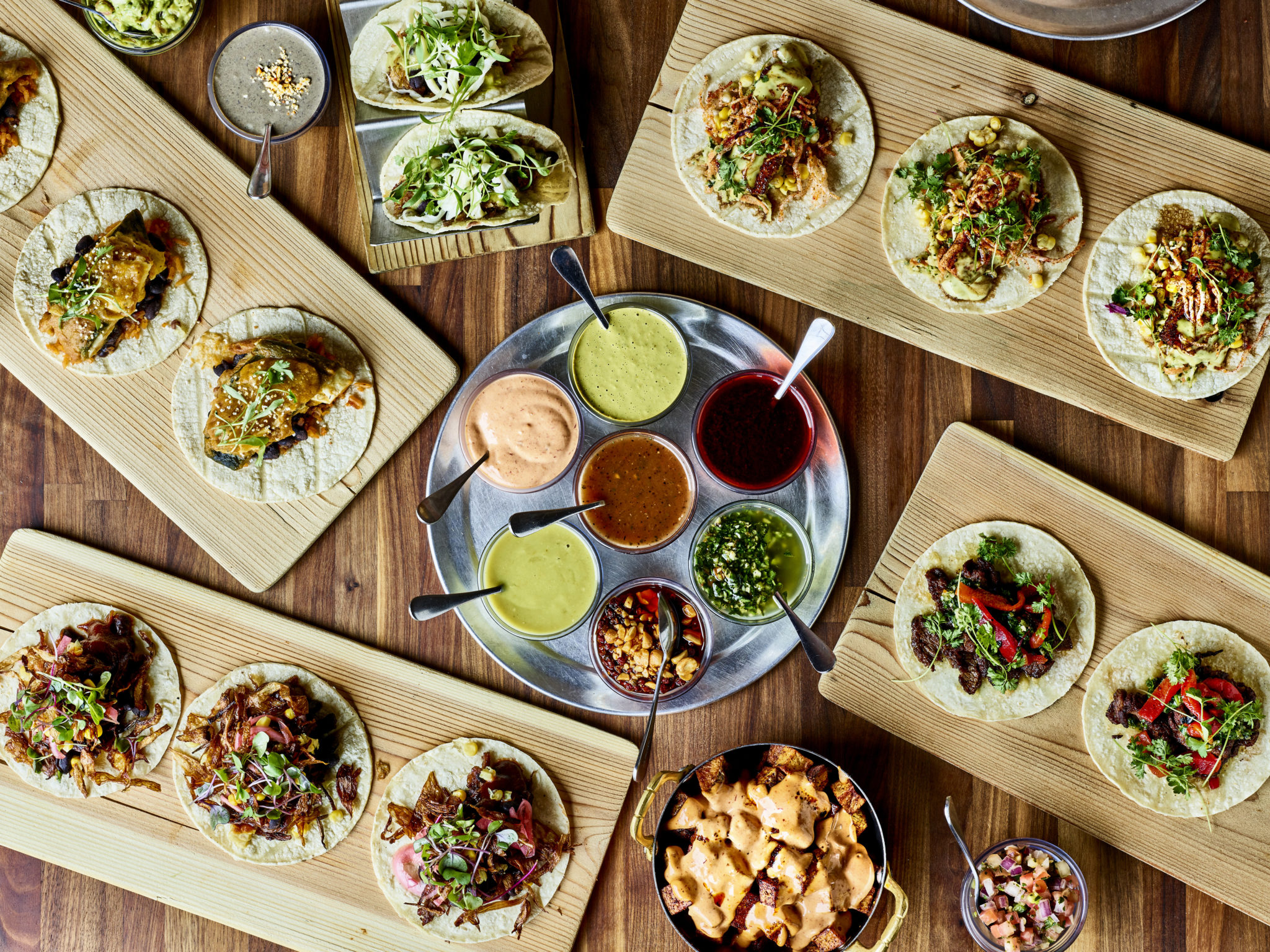
If you’ve ever visited Dearborn’s M Cantina, run by Puebla-born restaurateur and former New York City mixologist Junior “Liquid Chef” Merino and his wife, Heidi, you will be familiar with the Nuevo Latino street food restaurant’s impressive greeting.
While most Mexican restaurants around town might welcome you with chips and what’s typically a runny red salsa — perhaps two if there’s both mild and hot versions — the M Cantina salsa spread includes some 18 varieties running the gamut of sweet to devilishly spicy. The salsas arrive in squeeze bottles on an aluminum tray and include everything from a peanut-sesame chipotle salsa to oil-based salsa with fermented chile seco to acidic serrano aguachile and creamy avocado.
The variety is what we’ve come to expect from Merino, an official ambassador of Mexican gastronomy and tourism who once ran a mixology lab in the Bronx that boasted more than 3,000 individual ingredients.
But even M Cantina’s selection still only scratches the surface of salsa’s seemingly unlimited expressions.
Here, Merino explains in his own words the deep, varied, and often overlooked beauty of salsa, running us through the main categories and what they’re often used for.
— As told to Mark Kurlyandchik
Mother sauces of Mexico
Salsa in Spanish is “sauce” in English.
In Mexico, there are thousands of different salsas, and for every salsa there are also thousands of recipes. Every family in Mexico has its own way of doing salsa. Mole is a type of salsa. My mom is a twin, and she and her sister make their mole so different. This is between two twin sisters. Now imagine going to different families in different regions. The variations are endless.
Mole
“Mole” means sauce in Nahuatl, the original language of Mexico. Mole as we know it was created when the Spanish arrived to Mexico. They saw the Aztecs making sauces from spices. The Spanish added sugar and cacao and sweet plantains. They made it a sweet sauce. Now it’s kind of sweet and spicy depending on who is making it. For mole, you have to toast all the spices and then you blend it all together, which is how you get that nice, sweet flavor.
Mole is one of the main mother sauces and from there there are a ton of variations: mole amarillo, mole negro. And there is also another type of mole called adobo. It’s usually used for pork. It doesn’t have as much spices, but it goes really well with the fat of the pork and it gives it a nice flavor. It’s more for stronger or fattier meats.
All of our salsas can be part of a dish, so you can cook the dish in it. But mole is a salsa you can also eat by itself. When my mom makes it, I just put it on tortillas and eat it like that. I don’t even wait for the chicken or turkey.
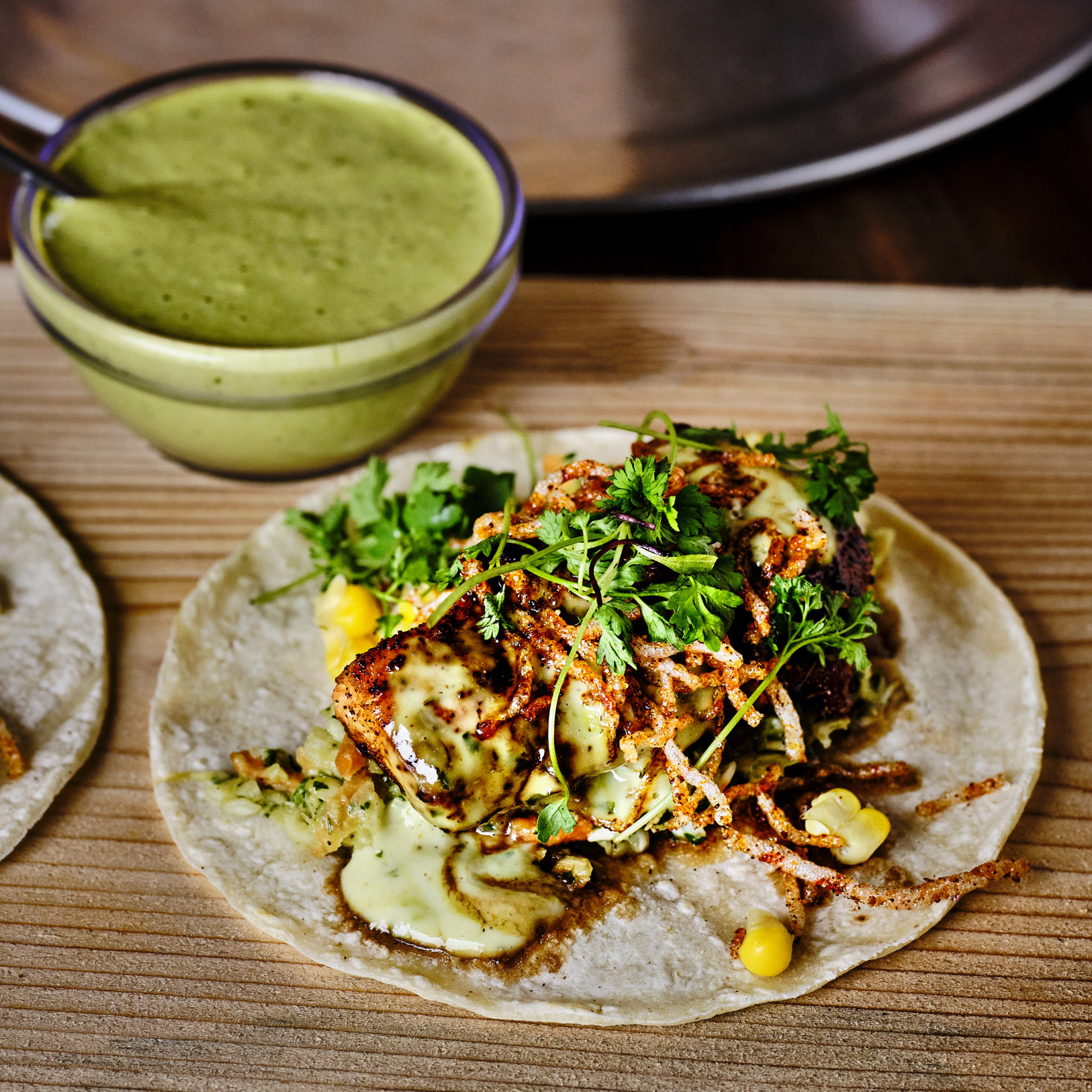
Guacamole
“Haucamolli” in Nahuatl means avocado sauce, but the Spanish couldn’t pronounce it so they just called it guacamole. It’s kind of the original salsa they had. It’s a really simple sauce they would spread on the tortilla and put everything else on it.
The oldest artifacts found in Mexico, molcajetes were found in caves in Puebla. They’re over 2,000 years old and were found with the pits of avocados inside. That proves they were making guacamole over 2,000 years ago and that avocados were domesticated in that area.
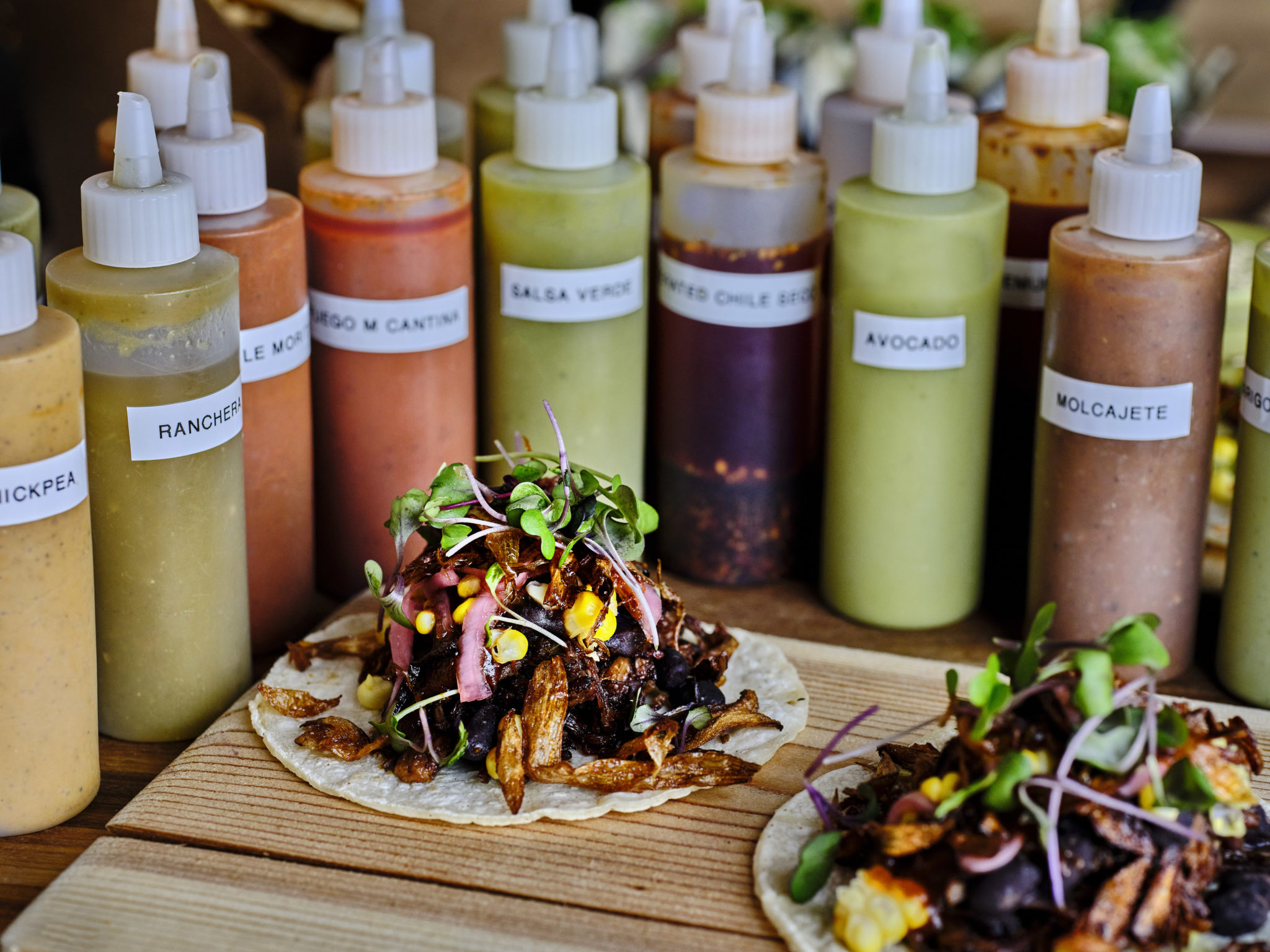
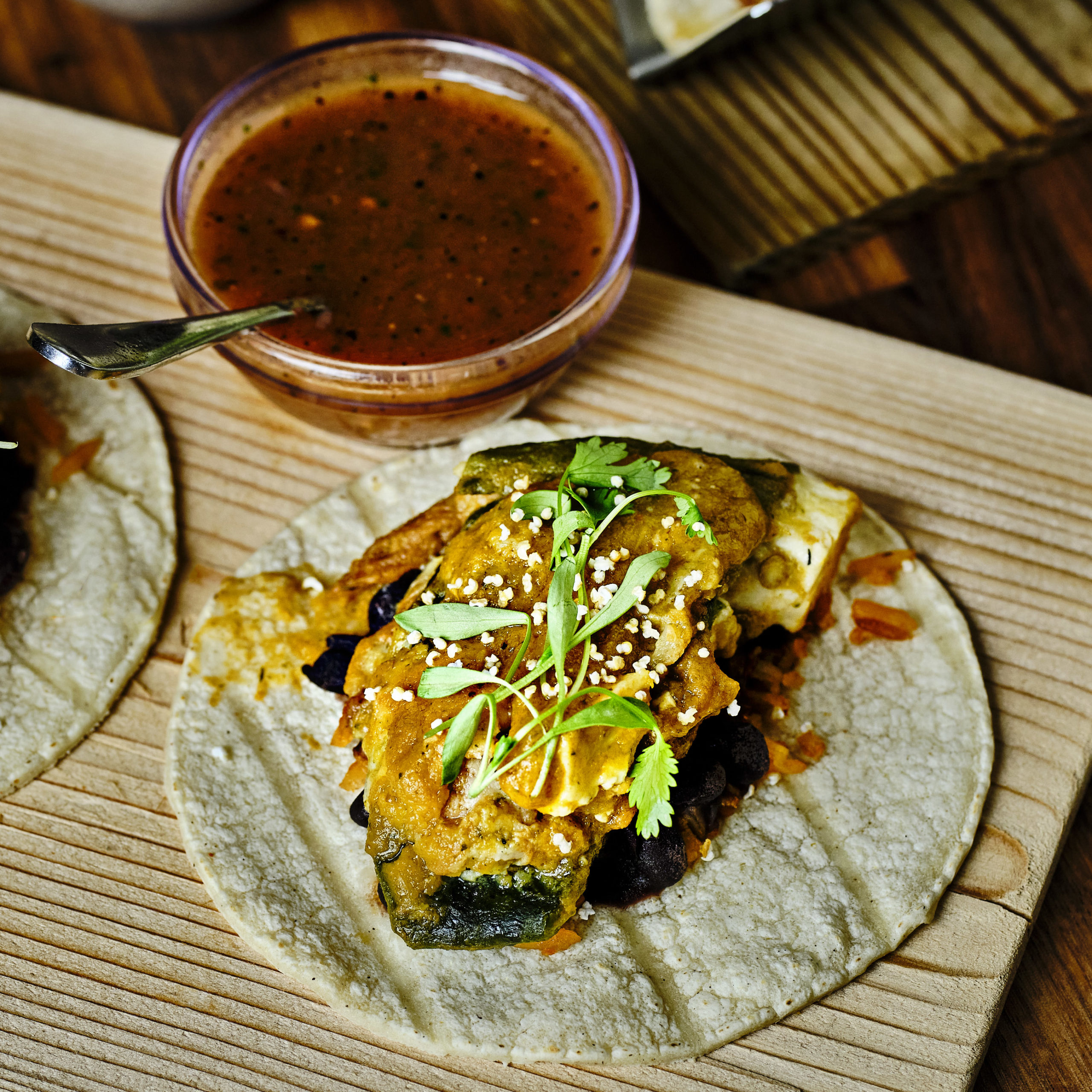
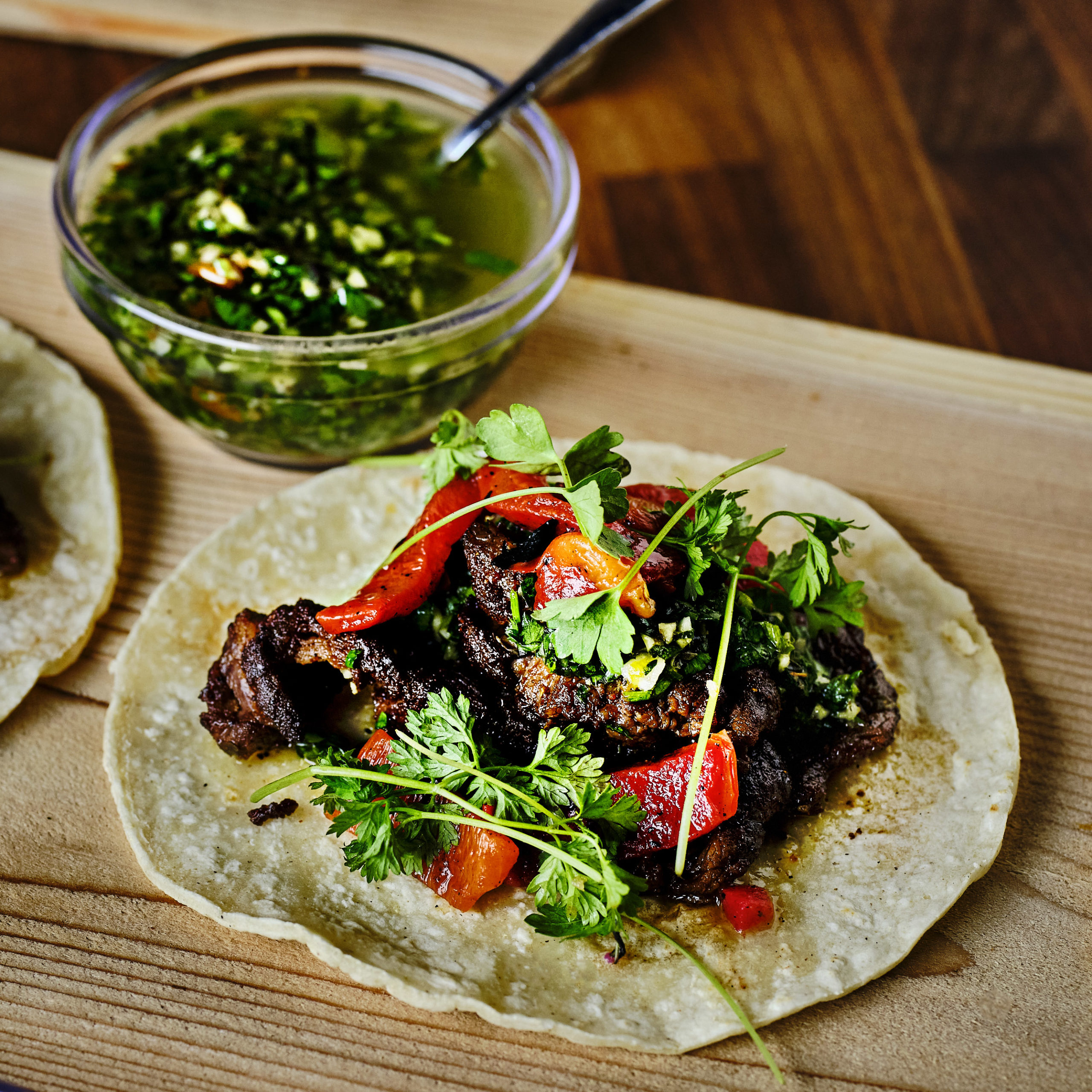
Salsa roja/ranchera
Now we go to salsa ranchera, which means it’s from the small towns. Mom and pop make them with no blenders. We use the molcajete. We smash the tomatoes. You roast the tomatoes and peppers on an open flame, or you can boil them. There’s so many different ways you can do it. You can put it on the comal. You just toss the peppers on top of the flat top and it gives it this beautiful kind of smoky aroma and then you can do that with all the spices.
Pico de gallo is considered to be a chunky type of salsa, like a salsa ranchera but in chunky pieces. It’s going to have onions, garlic, salt, water, tomatoes, and jalapeño. It’s the same thing as salsa ranchera but raw and cooked in the lime.
Basically, every home in Mexico makes a salsa ranchera and a salsa verde.
Salsa verde
Salsa verde is really traditional. It’s usually made from tomatillo, which is the main flavor. It’s acidic, so if you have something fatty like pork, you put it on top and it cuts right through that for a really nice flavor.
There’s also salsa verde con calabacita. A lot of times when you go to Mexico and you’re having salsa aguacate, it’s most likely not avocado but a zucchini salsa, because avocados are expensive. They cannot afford avocados, so they have to give you something similar. But it’s delicious! You don’t necessarily have to cook a lot of things. You can do salsa verde raw with a few drops of lime. Back in the day if you didn’t have a flame, you did it raw and made a really nice salsa fresca.
From salsa verde you get avocado salsa, zucchini salsa, and tomatillo salsa.
Salsa aceite
Oil salsas are used for a lot of different things. You can cook a fish in there. The oil you cook separate and then you add things to it. There’s a salsa called salsa macha, which means its going to be spicy and has chopped peanuts. Peanuts are native to Mexico. They mix peanuts with oil and dry peppers. It looks like crushed red pepper in oil, but you have to cook it together so that it extracts the flavors and at the end you add the peanuts. It’s a really nice salsa for steaks. That one is often used for cooking outside.
Salsa de crema
Salsa de crema are the ones that have cream. You have to know how to incorporate it, otherwise it curdles. Our crema is similar to sour cream but not as sour. You add it while you’re cooking the salsa and it makes a creamy, amazing sauce. They’re not very popular because you have to be good with tempering the crema with the acid.
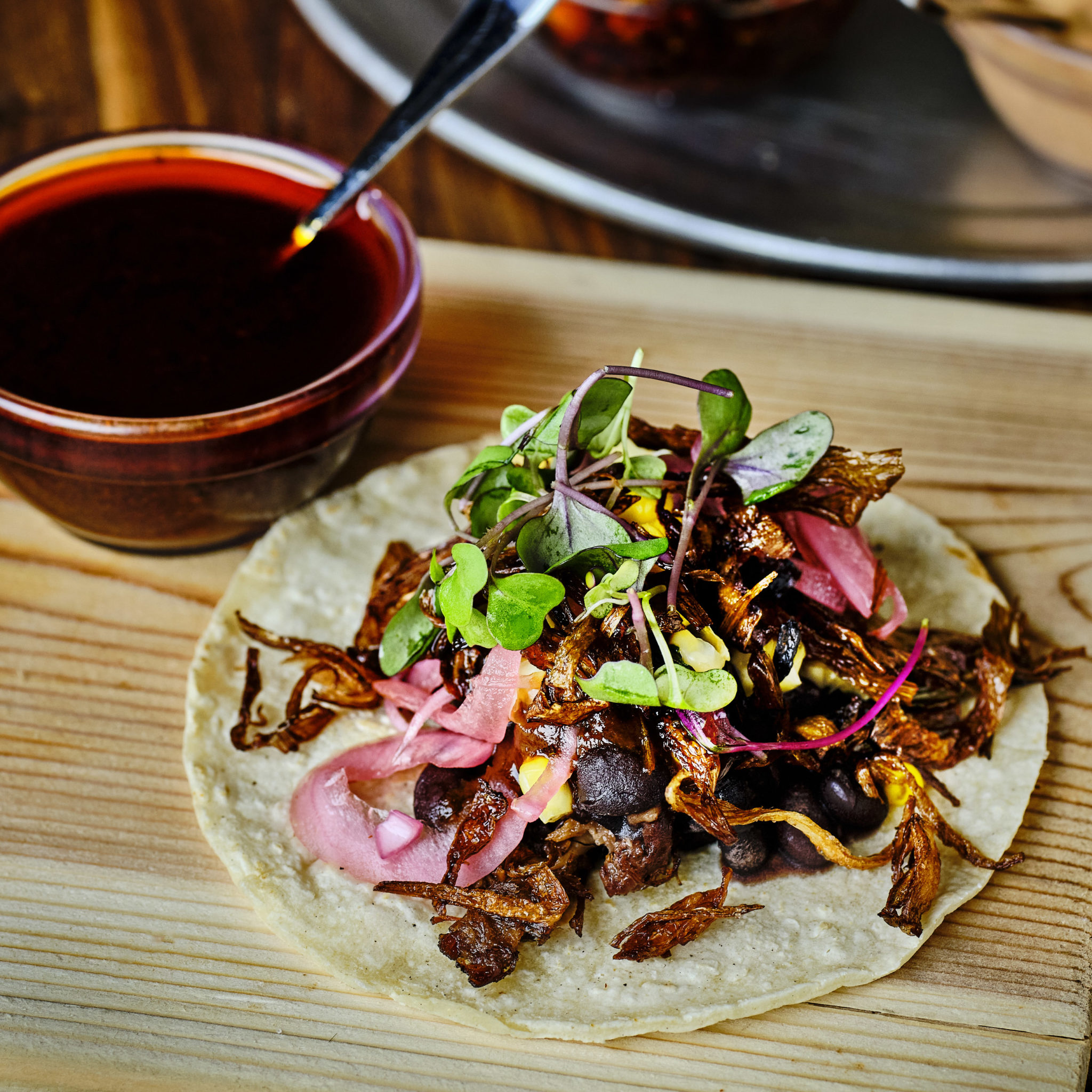
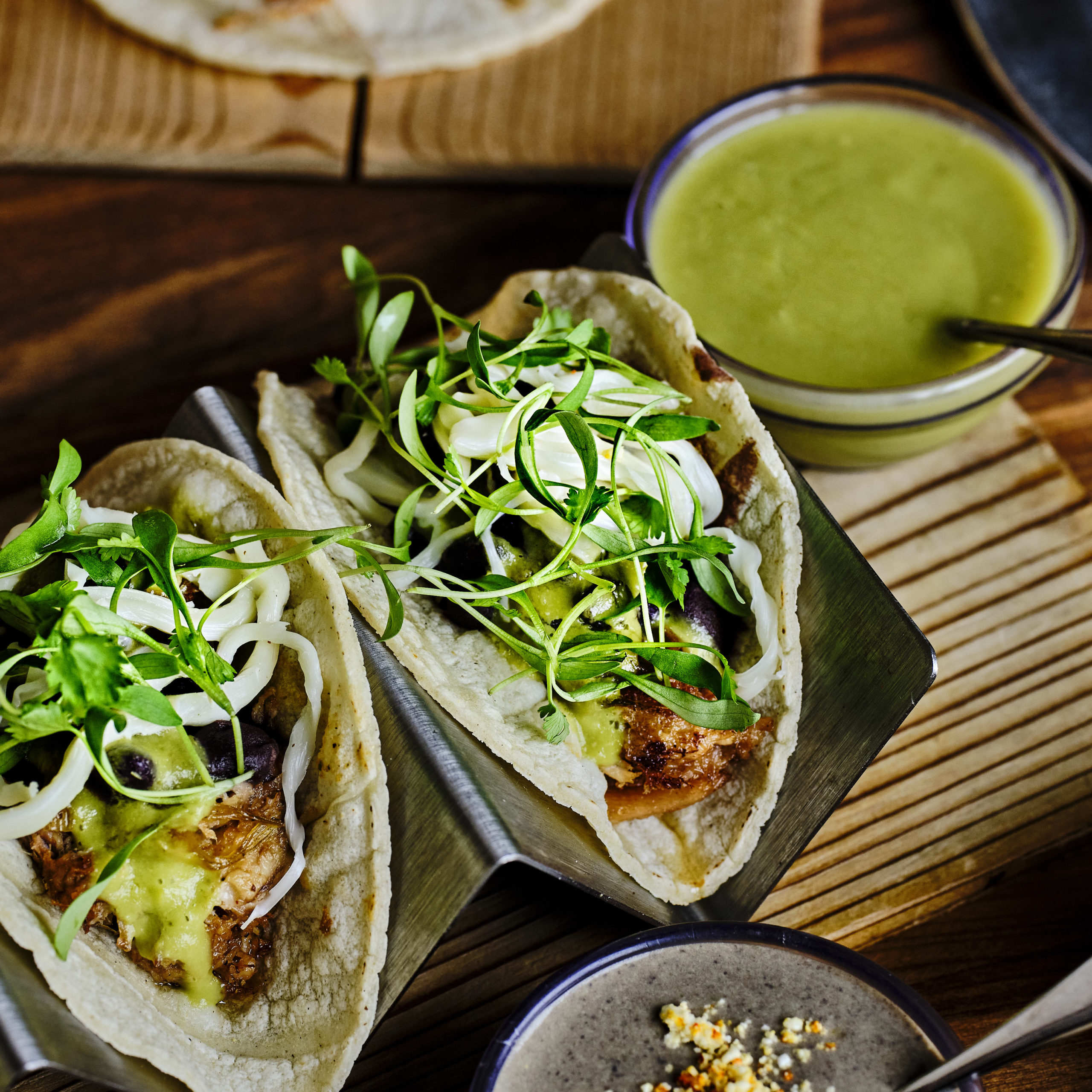
Escabeche and acid-based salsas
We also have salsas with acid, which is another branch. There’s a ton of escabeche. It’s a type of salsa, but the main ingredient is going to be acid. Acidic salsas go almost always with fish, so you will find them in the coastal areas.
Aguachile is the mother of the citrus salsas. It’s basically a salsa of water with lime juice and salt. That’s the basic one. But then you can get really complex with passionfruit and different things. But it’s different than ceviche. It’s more watery.
And everything else
A lot of people are starting to forget how many styles and processes we have for salsas. At M Cantina, we cook them because they last longer. You’re kind of pasteurizing all the peppers and tomatoes. That’s why I only have cooked salsas.
In Mexico, we have salsas that are made from toasted peppers, salsas that are roasted, salsas that we bake. We have salsas where first you fry a certain portion of the ingredients and then it gets mixed with the rest and blended. We have molcajete salsas where you just mash everything together.
I used to have fermented salsas. Those were actually left in vinegar, like salsa tabasco, which is fermented. You leave it open so it creates a flor, then you remove the flor. It’s a style of pickling from before there was refrigeration.
The different styles depend on what you’re having to eat. I can tell you what I like and what pairs with what, but your palate is your own.




